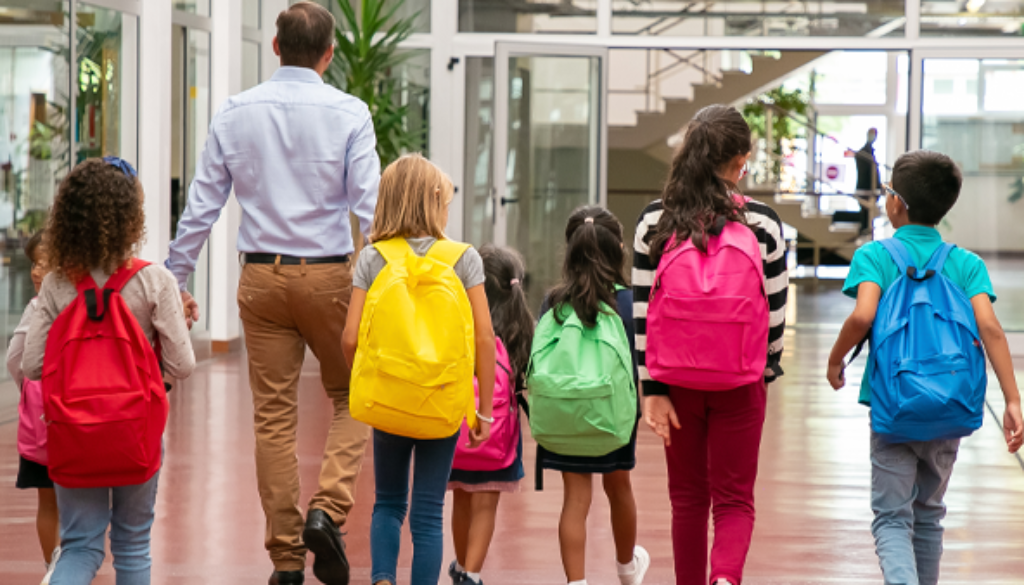(More) K-12 Stimulus Funding is Coming. How Will You Spend It?
On March 11th, 2021 – the first anniversary of COVID-19 being declared a global pandemic by the World Health Organization – President Biden signed the American Rescue Plan Act of 2021 into law. The Act provides $1.9 billion in stimulus funding for practically every sector of the American economy and for individuals impacted by the consequences of COVID-19 mitigation measures.
The education sector will receive $168 billion of the stimulus funding, with the lion’s share ($126 billion) being allocated to K-12 State Education Agencies (SEAs). SEAs will distribute funds through the federal Title 1 formula for funding schools and Local Education Agencies (LEAs) with high levels of low-income families, subject to each LEA developing appropriate plans for spending the funds.
The primary objective of the K-12 stimulus funding is to reopen schools for in-person learning within 100 days. Therefore, LEAs will need to develop plans that show how they will improve ventilation in school buildings, reduce class sizes to facilitate social distancing, hire sufficient staff to support smaller class sizes, and purchase additional Personal Protective Equipment for staff and students.
In addition, out of each LEA’s allocation of K-12 stimulus funding, 20% must be directed to programs that help counteract “learning loss” due to students missing school during the pandemic. An assessment of K-12 students last October found the average K-12 student was 1.5 months behind in reading and 3 months behind in math, with students from low-income families further behind.
The Third K-12 Stimulus Package – With More to Come
The K-12 stimulus package in the American Rescue Plan Act is the third emergency funding for K-12 schools in a year. Last March, K-12 schools benefited by $13.2 billion in the Coronavirus Aid, Relief, and Economic Security (CARES) Act, with a further $54 billion currently being distributed through December’s Coronavirus Response and Relief Supplemental Appropriation Act (or CARES Act 2).
The difference between the two previous K-12 stimulus packages and the current round of K-12 stimulus funding is that previous funding has been used to purchase technology and learning management systems for students, improve broadband connectivity for remote learning, and maintain the continuity of in-person learning where possible without increasing the viral spread.
While the exact requirements for the current round of K-12 stimulus funding still have to be confirmed, schools and LEAs concerned about repairing, upgrading, and maintaining school facilities or addressing other long-term needs should know that the Biden administration is proposing a $2 trillion national infrastructure improvement plan which allocates a further $100 billion to schools.
Options for Spending K-12 Stimulus Allocations
In addition to the primary objective of the K-12 stimulus allocation – and the measures mentioned above schools will have to implement to support it – there are several secondary objectives that school and LEAs can incorporate into their plans in order to qualify for further stimulus funding. These include, but are not limited to:
- Improving coordination among state, local, tribal, and other entities to slow the spread of COVID.
- Planning for further school closures due to COVID and supporting LEA efforts to improve preparedness.
- Supporting students experiencing homelessness, dealing with disabilities, or living in foster care.
- Training staff on the best ways to sanitize schools and proper use of personal protective equipment.
- Providing services to support staff and student mental health.
Supporting after school and summer learning programs.
While many schools and LEAs may already be involved in these activities, our own research suggests challenges exist with regards to communicating with state, local, tribal, and other entities, as well as with staff, parents, and students. Indeed, 26% of respondents to our Survey of Crisis Communication and Safety in Education said they experienced issues contacting parents and students.
Communication failures have the potential to jeopardize plans to reopen schools in line with the objective of the American Rescue Plan Act; and, as schools and LEAs that fail to spend their stimulus funding effectively can be excluded from future K-12 stimulus packages, it is worthwhile identifying communication challenges in your educational environment and ensuring they are addressed.
For this reason, we invite you to get in touch with our team of K-12 school communication experts to discuss any issues you may have with tactical incident collaboration, coronavirus preparedness, or communicating with staff, parents, and students beyond the classroom. Our team will be happy to organize a demo of the Rave Platform tailored to your specific requirements.




